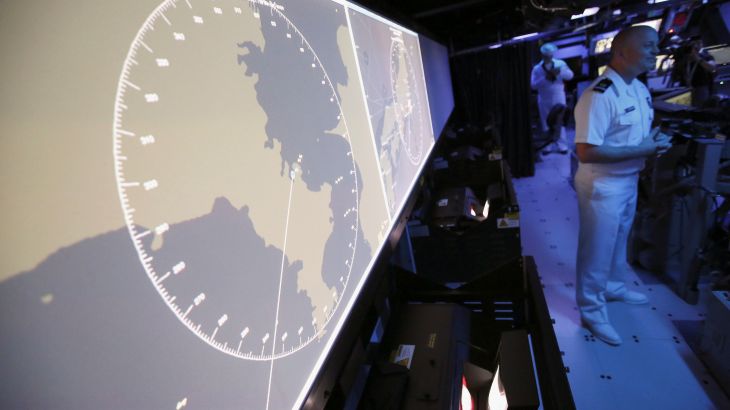China, US in war of words over South China Sea navigation
China says US destroyer warned off for second day, US Navy said its ship successfully challenged China maritime claims.

China’s defence ministry has said that it had – for a second time – monitored and driven away the US Navy guided missile destroyer USS Milius after it entered what Beijing claims as its territorial waters in the South China Sea near the Paracel Islands.
Friday marked the second straight day of a standoff – and heated words – between the two superpowers amid growing tensions in the South China Sea.
Keep reading
list of 4 itemsMarcos Jr urges Philippine military to focus on South China Sea
US gets new Philippine bases with South China Sea, Taiwan in mind
Chinese military says US ship ‘warned’ away in South China Sea
“We sternly demand the US to immediately stop such provocative acts, otherwise it will bear the serious consequences of the unforeseen incidents,” a spokesperson for China’s defence ministry said in a statement on Friday.
“The act of the US military seriously violated China’s sovereignty and security, severely breached international laws, and is more ironclad evidence of the US pursuing navigation hegemony and militarizing the South China Sea,” ministry spokesman Tan Kefei said.
He said that China would take “all necessary measures” to ensure its territorial security but did not elaborate.
The Southern Theatre Command of the Chinese People’s Liberation Army (PLA) said in a statement on Thursday that the USS Milius had been found intruding in waters around the Paracel Islands and that China’s navy and air force were mobilised to “warn” the ship which had then departed the area.
The US Navy disputed China’s version of events, saying the destroyer left the area on conclusion of a “routine operation”.
As China issued its second protest and warnings on Friday, the US Navy issued a lengthy statement specifying that the USS Milius had engaged in asserting “navigational rights and freedoms in the South China Sea near the Paracel Islands, consistent with international law”.
The USS Milius’ freedom of navigation operation was a lawful use of the sea and challenged “restrictions on innocent passage imposed by the People’s Republic of China (PRC)”, and also Taiwan, and Vietnam – who also have territorial claims in the disputed South China Sea – the US Navy said.
On March 24 (local time) Arleigh Burke-class guided-missile destroyer USS Milius (DDG 69) asserted navigational rights and freedoms in the South China Sea near the Paracel Islands, consistent with international law.
Click through to read more!https://t.co/zZgoUq6ozZ
— 7th Fleet (@US7thFleet) March 24, 2023
China, Taiwan, and Vietnam all claim sovereignty over the Paracel Islands, the Navy continued, and “in violation of customary international law, all three claimants require either permission or advance notification before a military vessel or warship engages in ‘innocent passage’ through the territorial sea”.
“The United States challenges excessive maritime claims around the world regardless of the identity of the claimant,” the Navy said.
“The operations demonstrate that the United States will fly, sail, and operate wherever international law allows –regardless of the location of excessive maritime claims and regardless of current events,” it added
The war of words is just the latest manifestation of growing tension between US and Chinese forces deployed in the South China Sea.
In early January, China’s defence ministry accused the US of violating international law and of “slander and hype” following a confrontation between a Chinese fighter jet and a US reconnaissance plane over the South China Sea.
The US military claimed that a Chinese J-11 fighter jet had come within six metres (20 feet) of the US RC-135 surveillance aircraft on December 21, forcing the latter to take evasive manoeuvres to avoid a collision. China said the US aircraft was conducting intentional close-in reconnaissance on China’s southern coastline so the People’s Liberation Army sent fighter jets to track and monitor the plane.
Relations between the US and China have become increasingly tense recently, with friction rising between the world’s two largest economies over a range of issues, including the self-ruled island of Taiwan, the shooting down of what the US described as a Chinese spy balloon – which Beijing denied – and the deepening of relations between Beijing and Moscow.